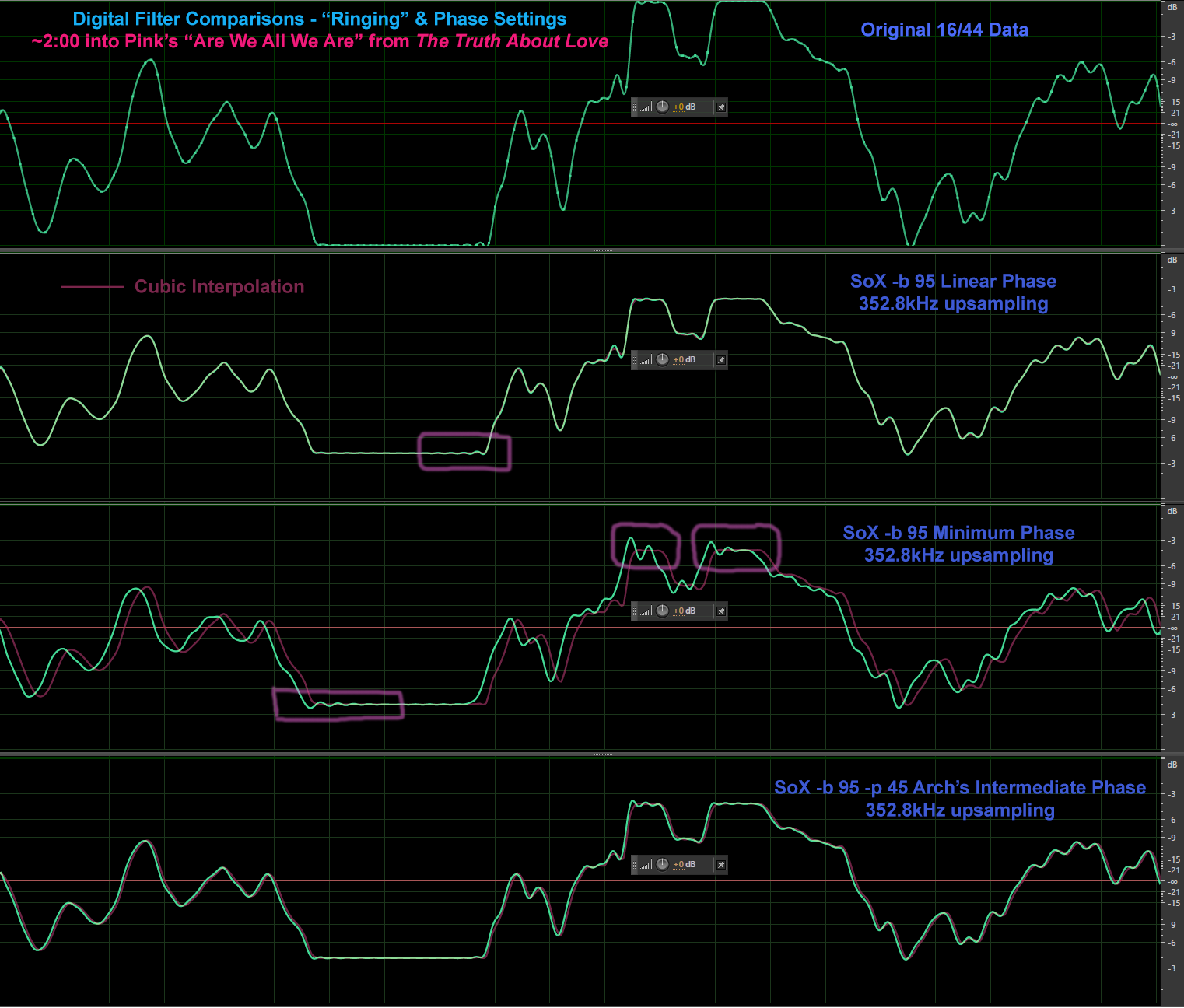Here's a quick "how to deal with different payback and recording sample rates in RMAA for dummies" with 44.1 playback and 192 kHz record as desired here:
1. Set RMAA 6.4.5 to e.g. 24 bit, 192 kHz. Make sure all tests save for impulse/phase response are checked, then use the "Generate WAV" button. If you have levels already set up, you can cancel saving the
Calibration signal and just save the
Test signal.
2. You now need to be able to play this back at 44.1 kHz. There are several different ways of going about this - you could use an audio player with a resampler in the DSP chain (e.g. Foobar2000 with the SoX resampler plugin), or just use e.g. Audacity to convert to 24/44 or 32/44 first (project sample rate = 44.1k, export).
3. Back in RMAA, choose the Steinberg ASIO device for recording. Click the ASIO button to verify input channel mapping and bring up the ASIO control panel in there to verify that buffer settings are sane (we're not aiming for lowest latency here, 512 samples is just fine). If you have already set levels, uncheck "Adjust playback/recording levels".
4. Now get both your audio player and RMAA ready. Then, initiate a "Recording only" test in RMAA and start playback of your resampled test tone once RMAA prompts you to do so. Note that this may require separate playback and recording devices, which in this case are actually present, but a number of audio devices actually support independent clocks for playback and recording (notably, HDA chips).
Digital filters built into audio DACs use
oversampling (synchronous upsampling) with multiple internal stages that are doubling input sample rate at the output for efficiency reasons (insert zero samples every other sample, apply FIR half-band filter, and bam). The Burr-Brown DF1700 (
datasheet) is a good example. Due to being synchronous, they will always scale with fs by default. At higher input sample rates chip designers will often eventually make them start shedding the first stage(s), which you will notice in DAC datasheets by filter performance becoming much worse. Some "NOS" filters are little more than a sample & hold. For an overview of what goes into a complete DAC, the datasheet for the old CS4303 is as good as any. The ADC side is pretty neat as you can actually find papers on some.
If you need some brushing up on sampling fundamentals, I wrote
a little intro ages ago, but there certainly is
no shortage of tutorials out there if you don't like mine with its rustic ASCII art graphics (
this guy has some
purtier ones).

